
Clip-on Spectacle Magnifiers
Get precisely the magnification you need with our unique box set of four lenses (1.7, 2.0, 2.5 and 3.0 X magnification). Simply clip the lightweight frame to your glasses, select the lens and see all the intricate details with needle-sharp clarity. Just flip up the lens for normal viewing.
Add to My listLysoglup ApS
Erhvervsvej 30
2610 Rødovre
+45 43 45 14 51
lysoglup@lysoglup.dk
https://lysoglup.dk
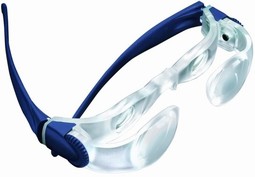
MAX Detail
MaxDetail - the glasses for demanding detailed work
With MaxDetail you can keep both hands free because these magnifying spectacles are worn just like normal glasses.
Ideal for:
Model making
Handicrafts
Reading
Painting
Restoration work
Soldering
Testing/inspection work
Watchmakers
Beauticians
Lysoglup ApS
Erhvervsvej 30
2610 Rødovre
+45 43 45 14 51
lysoglup@lysoglup.dk
https://lysoglup.dk
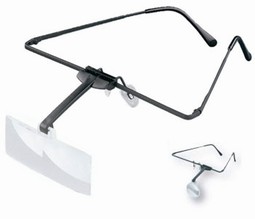
labo-med
The ESCHENBACH labo-med attachment magnifier is suitable for those who do not wear glasses (option available for those wearing spectacles : labo-clip)
With ESCHENBACH labo-med both hands are free
Ideal not only for work tasks but also for leisure and craft activities
Depending on the lens, suitable for monocular and binocular use.
Lysoglup ApS
Erhvervsvej 30
2610 Rødovre
+45 43 45 14 51
lysoglup@lysoglup.dk
https://lysoglup.dk

Labo-comfort Headband Magnifier
When not in use the shield can be simply lifted up out of the way.
Headband has an adjustable strap for individual height adjustment.
The headband magnifier can also be used by spectacle wearers.
Dark grey, enclosed plastic shield against diffused light and with an integrated lens bracket. Can only be used with binocular lenses.
Lysoglup ApS
Erhvervsvej 30
2610 Rødovre
+45 43 45 14 51
lysoglup@lysoglup.dk
https://lysoglup.dk

Replacement Clip-on Magnifier Lens
Clip-on magnifiers are designed to provide spectacle weavers with hands-free magnification.
Fits most eyeglass frames (Bridge: 25mm, Jaws open 15mm)
Lightweight
When not needed, the lens can be flipped up and out of the way
Lenses are interchangeable for different magnification needs
Lysoglup ApS
Erhvervsvej 30
2610 Rødovre
+45 43 45 14 51
lysoglup@lysoglup.dk
https://lysoglup.dk

Labo-clip and labo-med case
Clip-on Magnifier Kit. Designed to provide the eye care professional with a complete set of binocular and monocular clip-on lenses and two different clip mechanisms.
Add to My listLysoglup ApS
Erhvervsvej 30
2610 Rødovre
+45 43 45 14 51
lysoglup@lysoglup.dk
https://lysoglup.dk
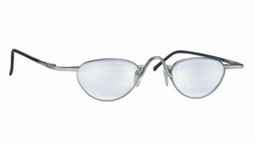
Noves Bino
The noves bino system from Eschenbach features the same high-tech diffractive lenses as the higher powered noves mono system for monocular near magnification, but in lower powers conventionally covered by thick prismatic ophthalmic lenses. The noves bino system can be ordered in any of 5 powers (4D, 5D, 6D, 8D and 10D)
Lysoglup ApS
Erhvervsvej 30
2610 Rødovre
+45 43 45 14 51
lysoglup@lysoglup.dk
https://lysoglup.dk
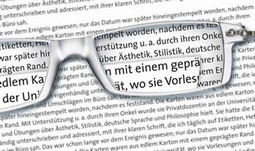
Miniframe Bifo
Easy Vision: readers with an additional close-up segment for small print or reading details during hobby work. Low Vision: readers for orientation on the reading material and for reading using the additional close-up segment. Relaxed Vision in both lens segment even at a short distance of use.
Add to My listLysoglup ApS
Erhvervsvej 30
2610 Rødovre
+45 43 45 14 51
lysoglup@lysoglup.dk
https://lysoglup.dk
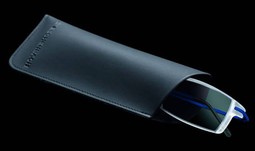
Miniframe2
Extended field of vision - compared to conventional off-the-shelf reading glasses. Ready-to-wear readers in 5 different optical base values: 1,0 dpt, 1,5 dpt, 2,0 dpt, 2,5 dpt, 3, dpt. A strenght which decreases upwards by 1 dioptre from the lower egde ro the upper egde of the lens. Ideal as entry-level model or as a second or spare pair.
Add to My listLysoglup ApS
Erhvervsvej 30
2610 Rødovre
+45 43 45 14 51
lysoglup@lysoglup.dk
https://lysoglup.dk

Binocular Galilean Telescope
Galilean telescopes for near are available as monocular or binocular systems. Galilean systems are small, lightweight optical systems that offer a bright image. They consist of a positive objective lens and a negative ocular lens. Frame mounted systems are ideal for extended viewing tasks, whereas hand-held systems excel spotting applications.
Lysoglup ApS
Erhvervsvej 30
2610 Rødovre
+45 43 45 14 51
lysoglup@lysoglup.dk
https://lysoglup.dk


